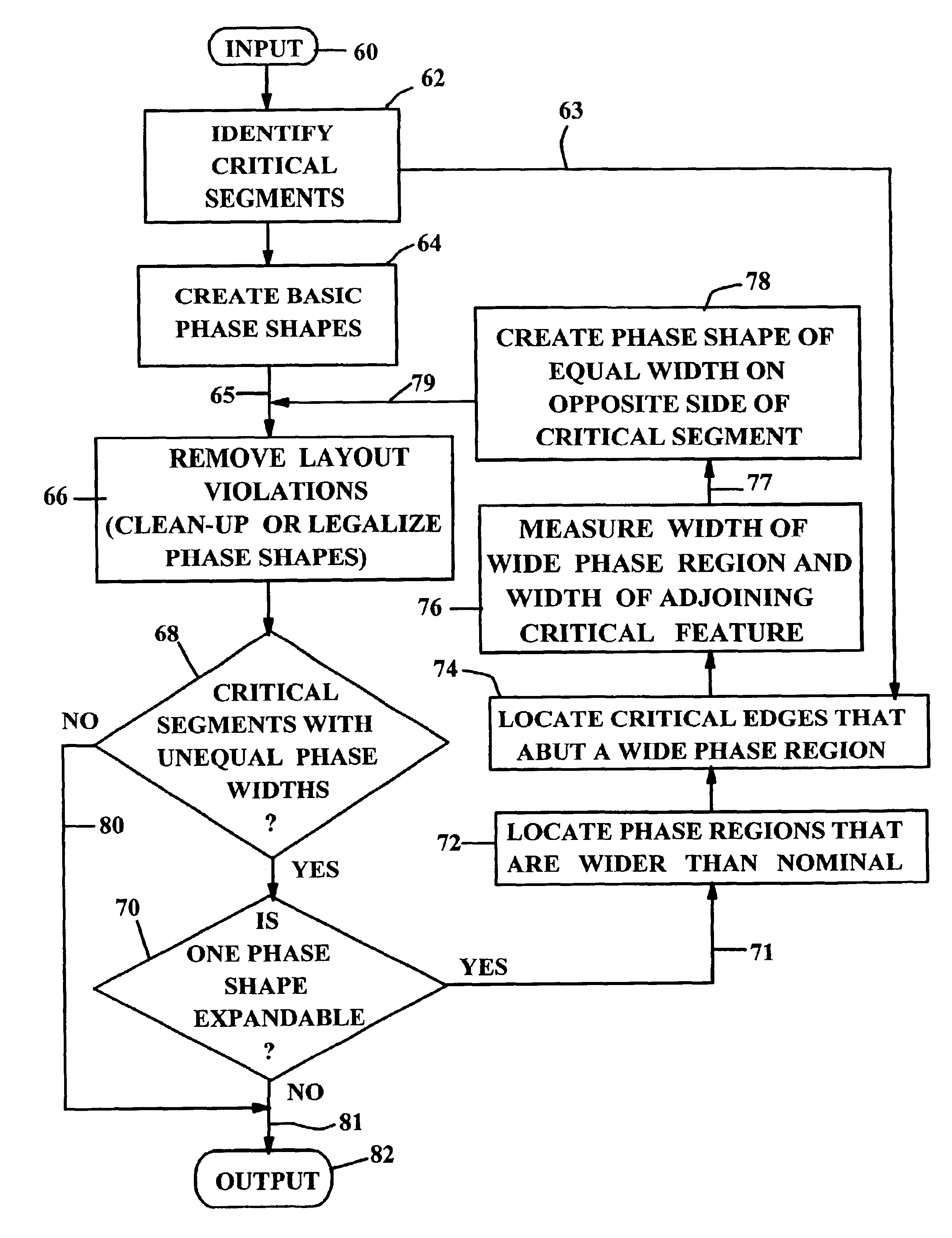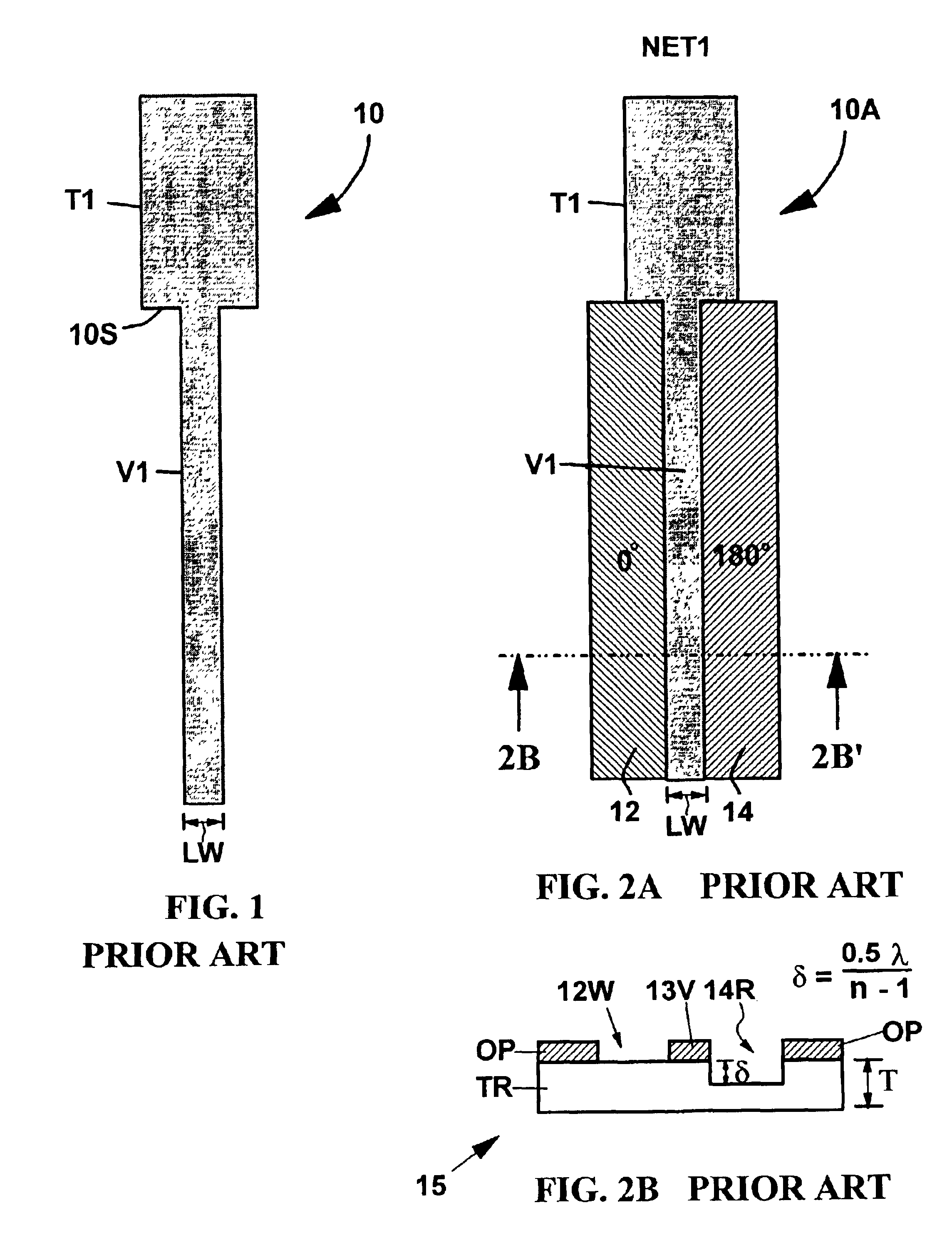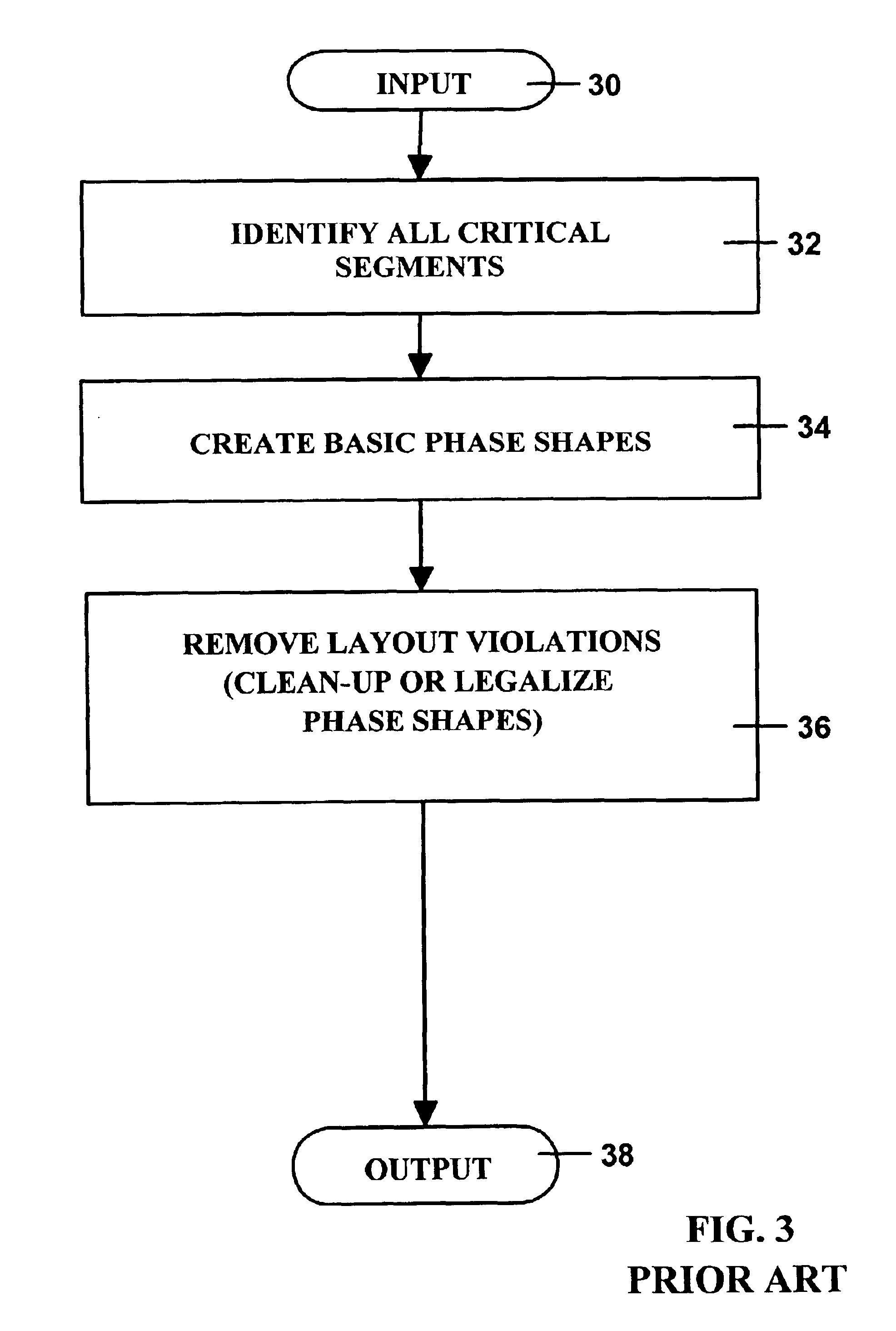Phase-width balanced alternating phase shift mask design
a phase shift mask and phase width balance technology, applied in the field of photolithographic methods, can solve the problems of limited exposure system resolution, failure of process, undesired shadows in projected images, etc., and achieve the effect of satisfying patterning
- Summary
- Abstract
- Description
- Claims
- Application Information
AI Technical Summary
Benefits of technology
Problems solved by technology
Method used
Image
Examples
first embodiment
[0096]FIG. 8 is a flow chart illustrating the method of this invention for selectively adjusting the width of phase regions to locally re-balance the phase widths. The program shown in FIG. 8 begins in step 40 which leads to step 42 of identifying the critical segments of the phase shapes in the transistors layouts which are the thin legs VA / VB / VC shown in FIG. 5
[0097]In step 44, the system creates basic phase shapes withe phase regions 12A / 14A for leg VA, phase regions 14B / 12B for leg VB and phase regions 14C / 12C for leg VC.
[0098]Next in the program proceeds along line 45 to step 46 to remove layout violations, i.e. clean up or legalize the phase shapes. For example in FIG. 5, the narrow phase shapes 14A / 14B are too close to satisfy the criterion which states that the remaining thin slivers of the opaque mask may not fall below a minimum width. The result of this step is the merger of the narrow 180° phase shapes 14A / 14B in FIG. 5 into the wider 180° phase shape 24 in FIG. 6.
[0099]...
second embodiment
[0103]FIG. 9 shows the flowchart of the method of this invention which is a modification of the method of FIG. 8. The program shown in FIG. 8 begins with step 60 which leads to step 62 of identifying the critical segments of the phase shapes in the transistors layouts which are the thin legs VA / VB / VC shown in FIG. 5. Step 62 provides an output to step 64 as well as providing an output on line 63 to step 74, which is discussed below.
[0104]Next in step 64, the system creates basic phase shapes with the phase regions 12A / 14A for leg VA, phase regions 14B / 12B for leg VB and phase regions 14C / 12C for leg VC.
[0105]Next in the program proceeds along line 65 to step 66 to remove layout violations, i.e. clean up or legalize the phase shapes. For example in FIG. 5, the narrow phase shapes 14A / 14B are too close to satisfy the criterion which states that the remaining thin slivers of the opaque mask may not fall below a minimum width. The result of this step is the merger of the narrow 180° pha...
PUM
 Login to View More
Login to View More Abstract
Description
Claims
Application Information
 Login to View More
Login to View More - R&D
- Intellectual Property
- Life Sciences
- Materials
- Tech Scout
- Unparalleled Data Quality
- Higher Quality Content
- 60% Fewer Hallucinations
Browse by: Latest US Patents, China's latest patents, Technical Efficacy Thesaurus, Application Domain, Technology Topic, Popular Technical Reports.
© 2025 PatSnap. All rights reserved.Legal|Privacy policy|Modern Slavery Act Transparency Statement|Sitemap|About US| Contact US: help@patsnap.com



